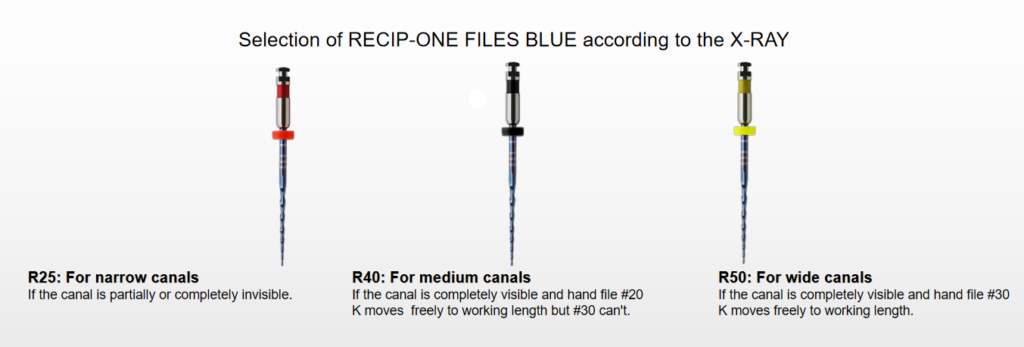Effective with less steps, time saving. Special heat treatment to make it in blue color, and with a very unique flexibility.
Multi-Files VS Recip-one
The common rotary ni-ti system usually requires the combination of multiple files to expand the root canal gradually, which is cumbersome and time-consuming.
The advantages of “balanced force method” and “balanced force method” are retained in the preparation of curved root canals by reciprocating motion of single file, and the disadvantages of low efficiency of balanced force method used by hand file are overcome.It can 40% reduction in overall molding time.
Advantages
SIMPLE
Choose one instrument that ,easy for both experienced and new dentists.
LESS STEPS, TIME SAVING
Finish a root canal with only one file during preparation instead of changing files, without rior hand filing in most cases; reduced preparation time compared with multi-file system.
BETTER FLEXIBILITY AND FRACTURE RESISTANCE
Ni-Ti alloy treated with heat activation gains increased resistance to resistance to cyclic fatigue and good flexibility to be pre-bent to curved canals.
Composition

ISO Color Silicone Stopper: R25 – Red , R40 – Black, R50 – Yellow
ISO Color Ring: R25 – Red, R30 – Blue, R35 – Green, R40 – Black, R50 – Yellow
Reciprocation angle: CCW:150 ° , CW:30 °
Non-cutting Tip: Reducing the possiblity root canal deviation
Cross-section:
S-shaped cross-section, and two cutting edges.
After special heat treatment to blue, got excellent flexibility and cyclic fatigue resistance.
Selection of Instrument

R25: For narrow canals:
If the canal is partially or completely invisible.
R40: For medium canals:
If the canal is completely visible and hand file #20 K moves freely to working length but #30 can’t.
R50: For wide canals:
If the canal is completely visible and hand file #30 K moves freely to working length.
Tips:
Root canal preparation was carried out with a 3 mm period (root canal must be filled with irrigation agent) gradually in and out (with slight apical force application) and rotary brush wall movement.
